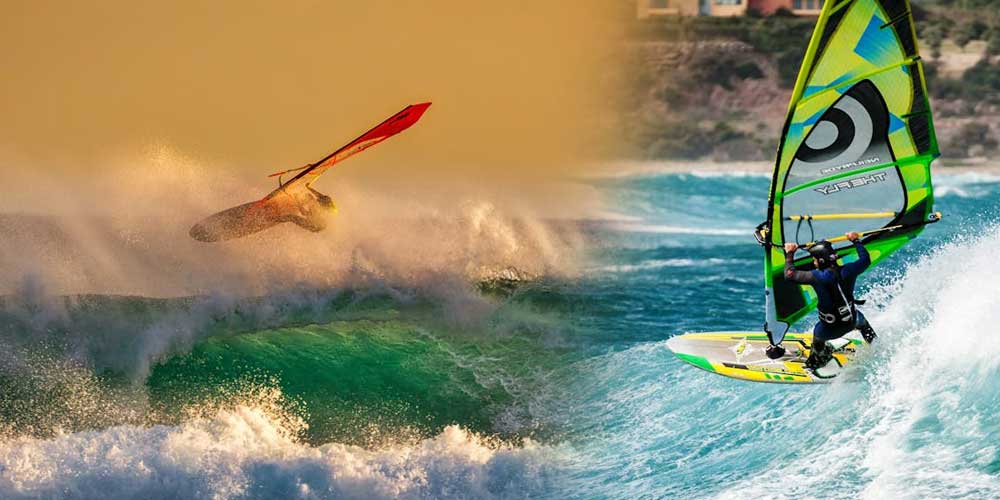Ever watched a windsurfer glide effortlessly across the water and wondered how they make it look so easy? Windsurfing, a thrilling blend of sailing and surfing, offers an exhilarating experience that combines the rush of the wind with the freedom of the open sea. However, mastering this dynamic sport requires more than just balance and bravery; it demands a keen understanding of key techniques that transform beginners into seasoned pros. In this blog post, we’ll delve into the essential skills you need to conquer the waves, from mastering the perfect stance to harnessing the wind’s power efficiently. By the end, you’ll be equipped with the knowledge to not only stay upright but to ride with confidence and style. We’ll explore the fundamental techniques, discuss common challenges and solutions, and provide tips from experts to enhance your windsurfing journey.Windsurfing, a thrilling sport combining elements of surfing and sailing, offers an invigorating experience on the water. Whether you’re a novice or seeking to refine your skills, mastering windsurfing requires commitment and practice. This article delves into essential techniques to help you excel in this dynamic sport.
Proper Stance and Balance
Your stance is vital for maintaining equilibrium on the board. Follow these guidelines to ensure stability:
- Keep your feet shoulder-width apart to distribute weight evenly.
- Bend your knees slightly to absorb wave motion.
- Maintain a relaxed posture to enhance flexibility and responsiveness.
By focusing on these elements, you can achieve a stable foundation, crucial for effective maneuvering.
Understanding the Wind
Wind comprehension is fundamental for controlling your sail and board. Here’s how to interpret wind conditions:
- Observe wind direction by watching flags or ripples on the water.
- Assess wind strength to adjust your sail tension accordingly.
- Use a wind meter for precise measurements, aiding in strategic planning.
Mastering this skill allows for better navigation and increased control over your equipment.
Sailing Upwind and Downwind
Efficient navigation requires proficiency in sailing both upwind and downwind. Here’s how to master these maneuvers:
Upwind (Tacking)
- Position your board at an angle to the wind.
- Shift your weight to the back foot to pivot the board.
- Steer the sail towards the wind, allowing for gradual progression.
Downwind (Jibing)
- Lean the sail away from the wind to initiate the turn.
- Shift your weight to the front foot to guide the board.
- Allow the sail to swing across as you complete the turn.
Practice these techniques to navigate efficiently and harness varying wind directions.
Harnessing the Power of the Sail
Controlling the sail’s angle and tension is crucial for speed and stability. Follow these tips:
- Adjust the sail angle to optimize wind capture for speed.
- Fine-tune sail tension to maintain control during gusts.
- Use harness lines to transfer power efficiently from the sail to your body.
Mastery of the sail empowers you to change direction and maintain stability on the board.
Water Start and Beach Start Techniques
Quickly and efficiently getting on the board is essential in various water conditions. Here’s how to execute these starts:
Water Start
- Position the board downwind and hold the sail above the water.
- Use wind power to lift the sail, pulling yourself onto the board.
- Balance your weight before standing up to stabilize the board.
Beach Start
- Stand beside the board in shallow water, holding the sail upright.
- Push the board forward as you step onto it, maintaining momentum.
- Quickly adjust your stance to stabilize and begin sailing.
Regular practice of these techniques ensures a smooth start, regardless of water conditions.
Improving Core Strength and Flexibility
A strong core and flexible body enhance windsurfing performance. Incorporate these exercises into your fitness routine:
- Planks and sit-ups to build core strength.
- Yoga and pilates for improved flexibility and balance.
- Resistance training to enhance overall muscular endurance.
Consistent training will significantly improve your capabilities on the water.
Safety and Awareness
Prioritizing safety ensures a secure and enjoyable experience. Follow these guidelines:
- Wear appropriate gear, such as a wetsuit and life jacket.
- Stay aware of your surroundings, including other water users and potential hazards.
- Check weather conditions before heading out to avoid unexpected challenges.
By adhering to safety protocols, you can enjoy windsurfing with peace of mind.
Conclusion
By focusing on these key techniques, you can enhance your windsurfing skills and enjoy the thrill of gliding across the water with confidence. Dedication to practice and continuous learning will lead to mastery of this exhilarating sport. Happy windsurfing!





